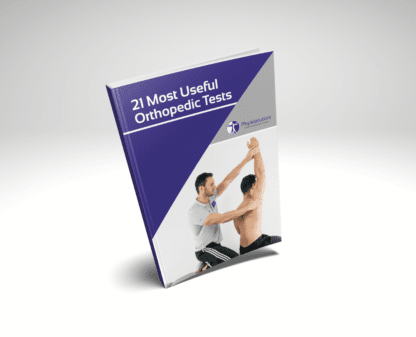Upper Limb Neurodynamic Test 1 Sequencing to Improve Differential Diagnosis of Median Nerve-Related Pathology

Introduction
Adapting the order in which the joints are moved during the Upper Limb Neurodynamic Test 1 (ULNT1) can help differentiate where the median nerve gets most stressed. The ULNT1, designed to create tension in the median nerve, has been used to evaluate musculoskeletal conditions such as carpal tunnel syndrome and cervical radiculopathy. The use of sequencing in the ULNT1 is thought to produce more strain in the median nerve, which is useful in clinical practice to differentially diagnose different origins of nerve-related pathology. Still, cadaveric studies indicated that different sequencing maneuvres did not alter strain during the ULNT1. To understand how the Upper Limb Neurodynamic Test 1 Sequencing works and fill the gap in the biomechanical understanding, this investigation was conducted in a sample of healthy participants.
Methods
For this purpose, a cross-sectional study was performed including 35 asymptomatic adults between the ages of 18-65. Shear-wave velocity as a proxy of nerve stiffness was measured using ultrasonography at the wrist and elbow during three different ULNT1 sequences with the participant supine:
- The standard ULNT1 sequence with in the following order: shoulder abduction, external rotation, forearm supination, wrist/finger extension, and elbow extension.
- The ULNT1 with a proximal-to-distal sequence following the order of cervical contralateral lateral flexion, shoulder abduction, external rotation, elbow extension, forearm supination, and wrist/finger extension.
- Distal-to-proximal ULNT1 sequence with first wrist/finger extension, forearm supination, elbow extension, external rotation, and shoulder abduction.

The participants were instructed to say “stop” when they felt any sensory response, such as tingling or pain, during the different maneuvers of the Upper Limb Neurodynamic Test 1 Sequencing.
The primary outcome measure was the change in shear-wave velocity from the starting positions to the end positions of the three ULNT1 sequences. A greater shear-wave velocity indicates a stiffer nerve.
Results
The ultrasonography analysis at the wrist showed that:
- Relative to the starting position, all three ULNT1 sequences increased the shear-wave velocity and, thus, the stiffness of the median nerve. This means that the median nerve gets effectively tensioned during the ULNT1.
- When the different ULNT1 sequences were compared, the ULNT1-standard and the ULNT1 with a distal-to-proximal resulted in higher median nerve stiffness at the wrist.
- The median nerve got stressed the most in the ULNT1 distal-to-proximal sequence

No differences in shear-wave velocity were observed at the elbow in between the different sequences. Again, every sequence showed an increase in shear-wave velocity, thus, nerve stiffness between the rest position and the 3 different ULNT1 sequences.
The use of different sequences did affect the end-range joint positions. In the standard ULNT1 procedure, the participants reported the onset of sensory symptoms during elbow extension at a mean angle of 146°. When the ULNT1 proximal-to-distal was performed, most participants reported sensory responses during elbow extension at a mean of 155° and only three participants reported the onset of sensory symptoms with wrist extension at a mean of 39°. The ULNT1 distal-to-proximal sequence the participants reported feeling sensory responses when glenohumeral abduction was initiated at a mean angle of 48°

Questions and thoughts
The current study found that when the distal-to-proximal Upper Limb Neurodynamic Test 1 Sequencing was administered, median nerve stiffness at the wrist was highest. This supports previous research on neurodynamic testing and sequencing. Recently, Bueno-Gracia et al. (2024) reported an improvement in diagnostic accuracy for carpal tunnel syndrome with neurodynamic test sequencing, compared to their previous study in 2015. The 2015 study found a sensitivity and specificity of 57.9% and 84.2%, respectively, which increased to 65.7% and 95.7% respectively when performing distal-to-proximal ULNT1 sequencing.
In the current study, the authors did not apply scapular depression during the ULNT1. This is strange since the description of the ULNT includes scapular depression.
Generalizability may be limited to healthy populations since no participants with nerve-related pathology or symptomatology were included.
Talk nerdy to me
This study used a cross-sectional design, meaning that the measurements were obtained at one specific time. By including participants who reported sensory changes during the ULNT1 in a range between 120° and 170° of elbow extension, the authors tried to include a homogeneous sample. This may be important since by the use of a cross-sectional design and one group of participants, there is no randomization at baseline to ensure the inclusion of equal groups.
The ultrasonography measurements were standardized in all participants by obtaining the images at two predefined locations: at the pronator quadratus muscle immediately proximal to the wrist and immediately proximal to the elbow.
The order of the Upper Limb Neurodynamic Test 1 Sequencing was randomized and was performed by only one examiner. The range of motion of the joints was measured with a goniometer, which may have produced measurement errors since the position where the participant said stop had to be held in order to measure the angle of the joint.
The ULNT1 is often performed when there is a suspected contribution of the median nerve in the onset of neuropathic pain. The current study also confirmed that the ULNT1 is effective in putting the median nerve under tension.
Take-home messages
When trying to differentiate between nerve-related musculoskeletal disorders, the ULNT1 can be of value for suspected median nerve problems. A distal median nerve-related problem like carpal tunnel syndrome would be better diagnosed by performing a ULNT1 with distal-to-proximal sequencing. On the other hand, the Upper Limb Neurodynamic Test 1 sequencing from proximal to distal may be more of use to reproduce symptoms of cervical radiculopathy.
Reference
21 OF THE MOST USEFUL ORTHOPAEDIC TESTS IN CLINICAL PRACTICE
We have comprised a 100% Free E-Book containing 21 of the hands-down most useful orthopedic tests per body region guaranteed to help you reach a proper diagnosis today!



